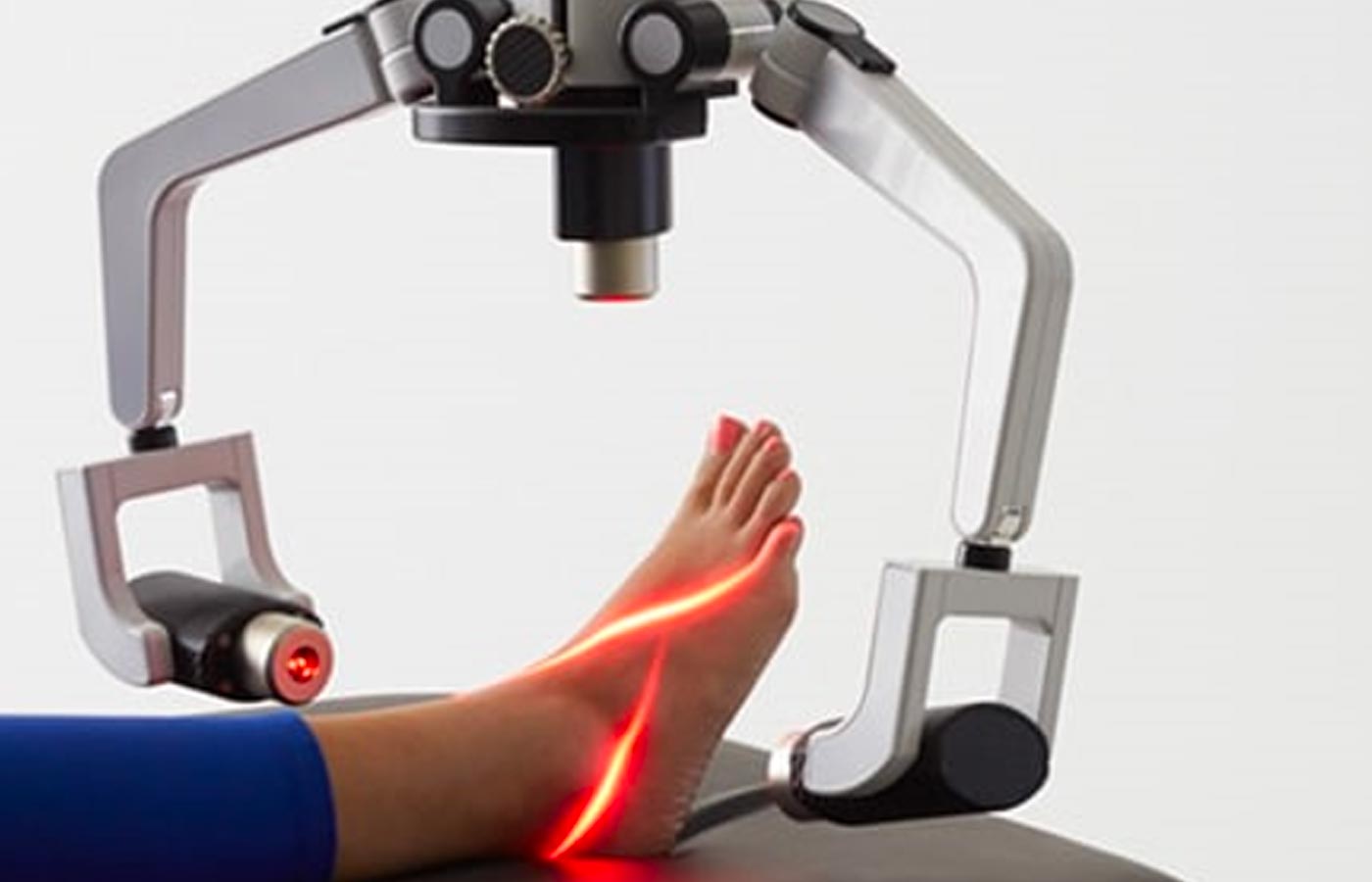Cold laser is a staple therapy of Tampa Bay Functional Neurology that makes it onto many patients’ treatment plans. As such, we often get the question, “How does cold laser work?” It’s a fair question too, since it is a relatively unknown therapy in contemporary medicine.
What is it? The first bit to understand is that doctors and researchers use many names to refer to the same therapy. TBFN uses “cold laser” as we feel it best reflects the mechanism of the therapy, but other valid names include Low-Level Laser Therapy (LLLT), Photo-Biomodulation (PBM), and Class I-III laser. It is called a “cold” laser to distinguish it from other medical lasers of higher intensity that give off heat, like you might experience with those used for hair removal or minor surgeries. Nevertheless, cold lasers are medical-grade lasers that penetrate through the skin up to 5cm to heal the targeted tissue. The depth of penetration is governed by the laser’s pulse frequency, which is measured in hertz (hz). The lower the frequency, the deeper the penetration into the body.
How does it work? Cold laser promotes healing through 3 basic mechanisms…
1. Angiogenesis.
- Simple summary: Laser stimulates the production of new blood vessels at the site of tissue injury. New vessels mean better blood supply, more nutrients, and more healing.
- Expanded explanation: Neo-angiogenesis due to cold laser is governed by human umbilical vein endothelial cells (huvecs). After laser irradiation, targeted tissue exhibits significantly great protein content of huvecs, in addition to upregulation of vegf and hif-1alpha, markers of vessel production. See more in this systematic review from frontiers in neuroscience: https://www.ncbi.nlm.nih.gov/pmc/articles/pmc7393265/
2. Metabolic Acceleration.
- Simple summary: Laser is a form of light therapy that causes a dramatic increase in metabolism at the level of the targeted injured tissue. This improves healing time.
- Expanded explanation: The primary target of metabolic regulation for cold laser is Cytochrome C Oxidase (CCO), a rate-limiting enzyme in the electron transport chain. In injured tissue, the activity of this enzyme can be inhibited by edema, governed by Nitric Oxide (NO) which results in localized cellular hypoxia if left alone. Cold laser prevails over this local effect by dramatically increasing CCO activity, which facilitates the distal portions of the electron transport chain, activates ATP synthase, and produces significantly greater amounts of ATP and new cell production in the injured tissue. If you would like to read more on this process, I would encourage you to peruse this additional systematic review from frontiers in neuroscience: https://pubmed.ncbi.nlm.nih.gov/35242050/
3. Connective Tissue Formation and Regeneration
- Simple summary: The wavelength associated with a cold laser beam increases activity of cells in the body responsible for wound healing and tissue regeneration.
- Expanded explanation: 660-nanometer light has been demonstrated in several publications to increase proliferation of mesenchymal stem cells, which in turn differentiated into fibroblasts, osteoblasts, and/or keratinocytes. These results were observed after post-radiation as early as 4-72 hours. Many more cellular mediators are discussed in this review: https://www.frontiersin.org/journals/oncology/articles/10.3389/fonc.2020.01255/full
What can it be used for? Strictly speaking, cold laser may be used for any injury in which there is swelling, tissue injury, or an ongoing inflammatory process. Some established pathologies that cold laser has been studied to treat include (but are not limited to): muscle strains, tendon injuries, headache, migraine, bone fractures, nerve injury, shin splints, bursitis, arthritis, spinal facet syndrome, and nonspecific back pain. Many, many more conditions can undoubtedly benefit as well.
So, let’s apply all this info with an example. Say you are dealing with shoulder pain. It hurts to move your shoulder through complete range of motion, and you feel you have lost some of your strength with specific shoulder motions. Your physical therapist told you that you have adhesive capsulitis, or “frozen shoulder”. Adhesive capsulitis is a pathology in which a number of adverse effects are happening: there is inflammatory activity in the shoulder capsule, and there may also be connective tissue adhesions, or “scar tissue” formation in the tendons and ligaments supporting the joint, making it difficult to move. Cold laser could be of potential significant benefit to you! Have a physician position your shoulder underneath a cold laser beam to target the capsule. This would help to resolve inflammation in the joint, increase metabolic activity in the tissue, and promote the regeneration of the scarred connective tissue that is causing the restricted motion. You may apply this sort of thinking to many different injuries too!
Furthermore, and this cannot be overstated, cold laser does not carry any established side effects when operated under the supervision of a physician who is trained in cold laser therapy. This, combined with its healing properties, makes it an ideal entry-point into pain medicine before electing for more serious, invasive procedures!
If you think cold laser might benefit you, please give us a call or book a consultation appointment with Tampa Bay Functional Neurology. We would love to take the first step with you today to a pain-free tomorrow!
Dr. Devin Radford
